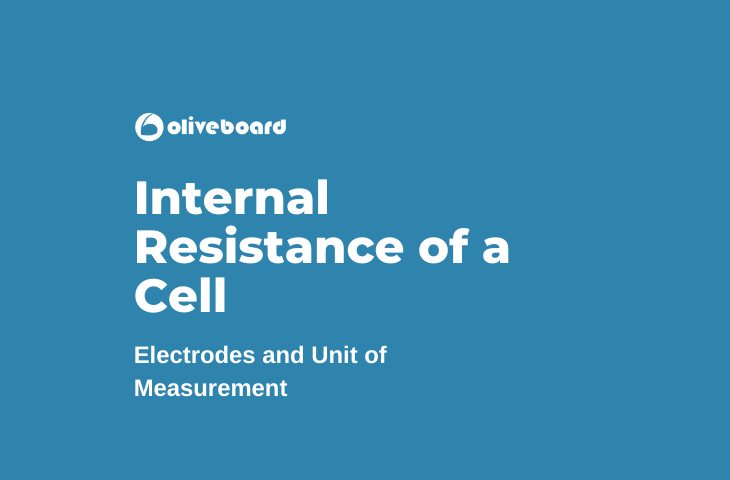In this blog, we are going to go through the topic of the Internal Resistance of a Cell. It is an important topic from the Physics (General Science Section). Questions on Physics are very common in Government Exams like SSC CGL, SSC CHSL, Railway RRD Group D, State Govt Exams, etc.
What is Internal Resistance of a Cell
Typically, internal resistance refers to an electrical resistance caused inside power supplies and inside batteries (a group of cells), which can limit potential differences that could have been supplied to the external load. In other words, internal resistance refers to that resistance offered by the electrodes and electrolyte at the time of the current flow. The electrodes and the electrolytes oppose the current flow.
Electrodes in A Cell
Each cell has 2 terminals referred to as the cell’s electrodes. One electrode is positive, and the other is negative. The positive electrode is referred to as an anode and the negative one as a cathode. You can put together two or more cells serially or parallel to form a battery.
To make a closed circuit, you need to connect the cell’s terminal with a wire. Only when the circuit is complete will the electric current flow from the negative terminal to the positive one.
During discharge, the positive terminal is a cathode, and the negative terminal is an anode. The positive terminal is an anode at the charge time, and the negative terminal is a cathode.
In the external circuit, electric current will flow from the cell’s positive to the cell’s negative terminal via various circuit elements. For maintaining continuity, the current needs to flow via the cell’s electrolyte, from the negative terminal to the positive one. During the current flow process within the cell, the cell’s electrolyte offers resistance to the current flow. This resistance is referred to as the internal resistance of a cell.
In other words, the internal resistance is the opposition offered to the flow of current by the batteries and cells themselves, leading to heat generation.
When a cell is fresh, its internal resistance is low, and as the cell ages, the global resistance increases. When the resistance increases, it leads to a drop in voltage when the current flows through it. This resistance is created by the electrodes and the electrolyte that is there in the cell. The internal resistance is caused by the electrolyte and electrodes that oppose the flow of current within the cell.
Unit of Measurement
The unit for measuring internal resistance is Ohms (Ω). The unit of measurement of electromotive force (emf) is Volts (V).
The relationship that exists between internal resistance (r) and emf (e) of cells can be shown as:
e = I (r R)
Where:
e = EMF in Volts
I = current (A)
R = Load resistance,
r = cell’s internal resistance in ohms.
When the above equation is rearranged, you get:
e = IR Ir
or
e = V Ir
The V in the equation above represents the potential difference (terminal) across the cell when the current (I) flows through the circuit.
It is important to remember that at all times, a cell’s electromotive force (e) will be more than the p.d. across the cell.
Let us look at an example. Assume that with no current in a circuit, the p.d. of the cell is as much as 3 V. With an I = 0.37 Ampere current flowing, there is a fall in terminal p.d. that drops to 2.8 Volts. What will be the internal resistance of the cell (r)?
We can solve it in the following manner:
e = V Ir
Or
(e – V)/I = r
Or
e – V = Ir
So,
r = (3.0 – 2.8)/0.37 = 0.54 Ohm.
Because the sell produces internal resistance, some electrical energy becomes heat energy. This is caused by the electrons that move within the cell. So, the p.d. that the remaining circuit receives will be:
V = e (cell’s emf) – Ir (internal resistor’s p.d.)
Conclusion
Now that you know the basic concept and calculation of the internal resistance of a cell practice more and read further to build on your concepts and skills.
FAQ
Internal resistance refers to the electrical resistance caused inside power supplies and batteries (made up of cells), limiting potential differences that could have been supplied to the external load.
When a cell is fresh, its internal resistance is low, and as the cell ages, the international resistance increases.
Hi, I’m Tripti, a senior content writer at Oliveboard, where I manage blog content along with community engagement across platforms like Telegram and WhatsApp. With 3+ years of experience in content and SEO optimization related to banking exams, I have led content for popular exams like SSC, banking, railways, and state exams.
